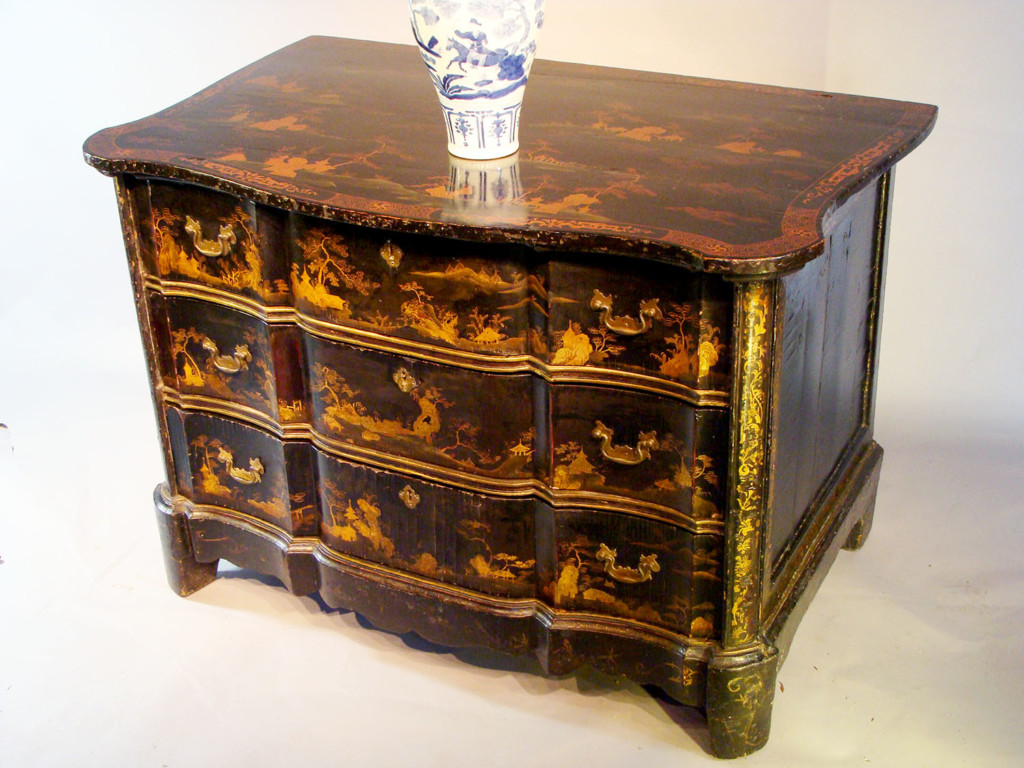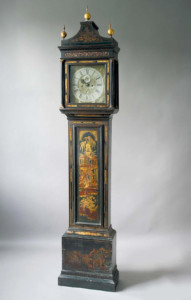Lacquered antique furniture demonstrates a highly complex and time consuming method of decorating. Lacquer (gum’lac) is derived from a tree which originates in central and southern China, the country considered the ‘birthplace of lacquering’. By the Shang Dynasty (Ca. 1766 -1027 BCE) the Chinese had recognized the protective qualities of the thick substance that they extracted from the lacquer tree. An ancient tomb, recently excavated, revealed lacquered antique furniture dating as far back as 403-221 BC.
Chinese lacquering and Japanese lacquering are similar but some would claim the latter developed the art to greater heights. Japanese lacquered antique furniture is generally more detailed.

Examples of lacquered antique furniture can usually be found at Box House Antiques.
- Chests can be viewed here
- Cabinets can be viewed here
- Bureaux can be viewed here
Lacquer needs a moist and temperate atmosphere in order to dry properly. Warm damp conditions convert the sap into a dense mass that eventually handles like enamel. Traditionally a surface would be sanded down and then many coats of lacquer applied with the use of a very fine brush made of human hair.
Polishing Lacquered Antique Furniture
Polishing lacquered antique furniture is an art in itself using a whetstone, and deer-horn derived powder, applied with a soft cloth. Anything up to 100 separate layers of Gum’lac extract may be applied. As each layer is then finely hand polished to achieve the highest level of finish this is necessarily a hugely time consuming activity.
Categories of lacquered antique furniture

The most frequently seen antique lacquered item of furniture in England is the long case clock. This is largely due to the historical coincidence of both the early imports by the East India company Circa 1650 and the transition to the pendulum system for measuring time.
Other lacquered antique furniture items include
- Commodes
- Bureau cabinets & bookcases
- Writing boxes
- Tables
- Screens



